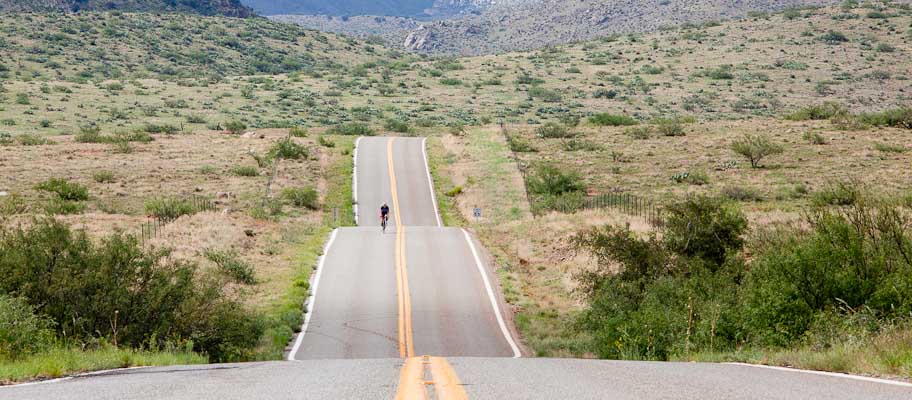
The key to rollers is maintaining your cadence and gearing!
Stay in the gear that you started the hill climb for as long as possible. Shift only when your cadence starts to slow below 75. A cadence between 70 to 90 is ideal. If you shift too early you will lose valuable momentum; however, if you shift too late then you might stall out.
Attack the bottom of the roller and gradually increase effort as you climb the hill until you must shift. Short rollers are like mini intervals. Just remember you are going to be able to rest on the other side. But wait… the climb is not over yet… make sure to power over the top and only stop pedaling once you have crested and the gravity has kicked in to high gear. Make sure to not lose any valuable momentum by stopping pedaling just as you crest.
An important thing to remember is when you are shifting try to “easy pedal” for a split second to allow the shift to happen. If you don’t, you run the risk of dropping your chain… or even worse breaking it! You attack rollers with a lot of intensity so there is going to be a lot of pressure on the chain if you just try and shift, it may also result in not shifting at all and again you will lose valuable momentum by slowly stalling out. If you have been cycling long enough this has inevitably happened to you… not fun! You look down as if there is something wrong with the bike… but it is usually just how you use it.
I try and stay seated as long as possible by keeping my cadence high in the beginning, but once the cadence starts to slow, I get out of the saddle and find a nice rhythm to finish off the climb powering over the top and cruising down the backside.
Cycling rolling hills is FUN! I Love it!
The complete guide to climbing – by John Summerson
Subscription
If you liked this post subscribe to my newsletter at the top right of the page to receive more like it!